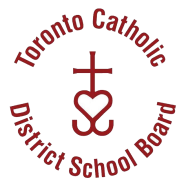
Indigenous Education
Indigenous Education
That Indigenous peoples, whose identity and very existence is threatened, will be shown due respect. - Pope Francis' Universal Prayer
Indigenous peoples are culturally distinct ethnic groups who are native to a particular place.
The Canadian Constitution of 1982 recognizes the First Nations, Métis, and Inuit people as three distinct Indigenous groups within Canada.
It is estimated that there are more than 370 million indigenous people spread across 70 countries worldwide. Spread across the world from the Arctic to the South Pacific, they are the descendants - according to a common definition - of those who inhabited a country or a geographical region at the time when people of different cultures or ethnic origins arrived. The new arrivals later became dominant through conquest, occupation, settlement or other means. - United Nations Permanent Forum on Indigenous Issues
United Nations Permanent Forum on Indigenous Issues
First Nations
First Nations is a term used to describe Indigenous peoples in Canada who are not Métis or Inuit. There are 634 recognized First Nations band governments across Canada, speaking more than 50 distinct languages. Most of the First Nations band governments are primarily located in the provinces of Ontario, British Columbia, Manitoba, and Saskatchewan.
Inuit
The Inuit are a group of culturally similar people inhabiting the Arctic regions of Greenland, Canada, and Alaska.
In Canada, the Inuit live throughout most of Northern Canada in the territory of Nunavut, Nunavik in the northern third of Quebec, Nunatsiavut and NunatuKavut in Labrador and in various parts of the Northwest Territories, particularly around the Arctic Ocean, in the Inuvialuit Settlement Region.
Métis
Since the 18th century, the word Métis has been used to describe individuals with mixed Indigenous and European ancestry.
What distinguishes Métis people from everyone else is that they associate themselves with a culture that is distinctly Métis, which originates from mixed descendants of the Indigenous peoples and European fur traders who settled in present-day Manitoba. There are others outside of the Métis Nation who also identify as Métis, particularly in Quebec and the Maritimes.
Land
As of 2016, Indigenous peoples in Canada totalled approximately 1.67 million people, yet this number represents only approximately 4.9% of the national population.
We all share this land that was originally inhabited by the Indigenous people of Canada. As we become more aware and make a choice to take action to discover the truth of this past with genuine acceptance, we can then move forward with a new perspective that encompasses a deeper understanding of the lingering ripple effects that abuse of power has on the spirit and soul of a people, community, and nation.
Realize that we as human beings have been put on this earth for only a short time and that we must use this time to gain wisdom, knowledge, respect and the understanding for all human beings, since we are all relatives. – Cree Proverb
Contact Us
We are here to help and to answer any questions you might have.
Andre O’Bonsawin
Indigenous Affairs Advisor
Email: andre.o'bonsawin@tcdsb.org
Sonya Charal
Indigenous Education Lead Teacher
Email: sonya.charal@tcdsb.org
Cherie Wardle
Indigenous Education Resource Teacher
Email: cherie.wardle@tcdsb.org
